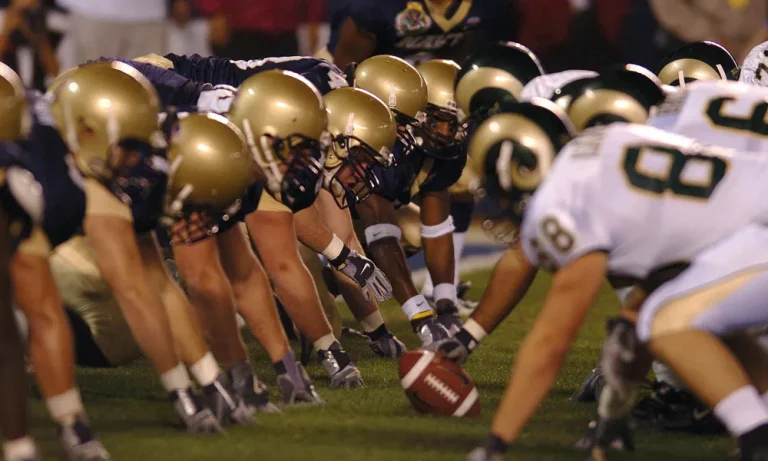Football vs. Soccer: Unraveling the Global Rivalry
Are you ready to dive into the electrifying world of football and soccer? These two sports, although often used interchangeably, have unique histories and rules that set them apart. So grab your jersey, lace up your boots, and let’s explore the thrilling game that captivates fans across the globe!
Origins and Evolution
Football and soccer have fascinating origins that date back centuries. Understanding their historical development helps us appreciate the rich heritage of these beloved sports.
Origins of football in ancient civilizations
Football, or a variation of it, can be traced back to ancient civilizations. In China, the game of Cuju was played as early as the Han Dynasty (206 BCE – 220 CE). Similarly, the Mesoamerican ballgame, played by the Mayans and Aztecs, had elements resembling football.
Development of soccer in medieval times
While football had its roots in ancient times, soccer as we know it today began to take shape during the medieval era. In England, a form of the game called “mob football” was popular, where entire villages would participate in chaotic matches with minimal rules.
Over time, these games evolved into organized matches played between rival villages and towns. By the 19th century, standardized rules were established, laying the foundation for modern soccer.
Differences in rules and gameplay
One significant difference between football and soccer lies in their rules and gameplay. Football, also known as American football or gridiron, is a highly physical sport with strategic plays, tackling, and the use of hands. Soccer, on the other hand, is played predominantly with the feet, emphasizing agility, teamwork, and precise ball control.
While football has become more popular in North America, soccer has gained global prominence, captivating fans with its fast-paced, continuous action.
Naming Confusion
Have you ever wondered why football is called soccer in some countries? The naming of these sports can be quite confusing, but fear not, we’re here to shed some light on this intriguing topic.
Why do different countries use different terms?
The usage of different terms for football and soccer stems from historical and cultural factors. In countries like the United States, Canada, and Australia, where other forms of football, such as American football and Canadian football, are popular, the term “soccer” was adopted to differentiate the sport we know as football from these variations.
In contrast, countries like England, where the modern game of soccer originated, use the term “football” to refer to the sport. Similarly, other countries influenced by British colonialism, such as India and Nigeria, also use the term “football” to describe the sport we commonly call soccer.
Historical context behind the terms “football” and “soccer”
The term “football” itself has a long history and can be traced back to medieval Europe. It referred to a variety of games played on foot, often involving kicking a ball. Over time, different variations of the game emerged, leading to the development of specific rules and regional names.
The term “soccer” is a shortened form of “association football.” In the 19th century, to distinguish it from other football codes, the sport was commonly referred to as “assoc” or “soccer” in England. Eventually, the term “soccer” stuck and became widely used in some parts of the world.
Rules and Gameplay
When it comes to football and soccer, the rules and gameplay may seem similar at first glance, but upon closer inspection, there are significant differences that set these sports apart.
Detailed comparison of rules and regulations
While both football and soccer involve two teams competing to score goals, the rules governing these sports differ. In football, players advance by carrying or throwing the ball forward, while in soccer, players move the ball primarily by kicking it, with minimal use of hands.
Football has complex rules surrounding downs, yardage, and scoring, whereas soccer follows a simpler structure with continuous play and a focus on uninterrupted ball movement.
Differences in field dimensions and team sizes
The dimensions of the playing field also vary between football and soccer. Football fields are larger, typically measuring 120 yards long and 53.3 yards wide, while soccer fields range from 100-130 yards long and 50-100 yards wide. This variation in size affects the pace and dynamics of the game.
Moreover, team sizes differ as well. Football teams consist of 11 players on each side, with specialized positions for offense, defense, and special teams. In contrast, soccer teams field 11 players per side, with a more fluid distribution of roles and responsibilities.
Highlighting key variations in gameplay strategies
The contrasting rules and field dimensions give rise to different gameplay strategies. Football emphasizes strategic plays, intricate formations, and a mix of running and passing tactics. On the other hand, soccer focuses on ball possession, teamwork, and precise ball control, with an emphasis on passing, dribbling, and creating scoring opportunities.
Popularity and Global Reach
Football and soccer are undeniably two of the most popular sports in the world, captivating millions of fans across continents.
Analysis of football’s popularity worldwide
Football, with its rich history and global tournaments like the FIFA World Cup, has achieved unparalleled popularity across the globe.
It is widely regarded as the most popular sport in terms of fan base and participation. From Europe to South America, Africa to Asia, football unites people from diverse backgrounds, transcending cultural and linguistic barriers.
Soccer’s dominance in certain regions
While football enjoys worldwide acclaim, soccer, as it is commonly known in some countries, dominates in specific regions.
In North America, for instance, soccer has witnessed significant growth in recent years, particularly among younger generations. Major League Soccer (MLS) has gained traction, and the sport’s popularity continues to rise.
Comparison of fan culture and fanbases
The fan culture surrounding football and soccer varies across regions. In football, passionate fans fill stadiums, creating an electrifying atmosphere with chants, songs, and team-specific traditions. The bond between football clubs and their supporters runs deep, often spanning generations.
In soccer, fanbases are also vibrant, but the culture may differ. Supporters’ groups, known as “ultras,” are prevalent in some countries, bringing their unique brand of enthusiasm to matches. Soccer fans, too, display unwavering loyalty and pride for their teams, contributing to the sport’s fervent following.
Major Leagues and Competitions
Football is not just a game; it’s a global phenomenon that captivates millions of fans around the world.
Top Football Leagues
The Premier League and La Liga are among the most prestigious and widely followed football leagues. The Premier League, based in England, showcases some of the world’s best teams like Manchester United, Liverpool, and Chelsea.
La Liga, based in Spain, boasts powerhouses like Barcelona and Real Madrid, known for their fierce rivalries and exceptional talent.
Notable soccer competitions
The World Cup and UEFA Champions League are two of the most notable soccer competitions. The World Cup, held every four years, brings together national teams from around the globe to compete for the ultimate prize in football.
The UEFA Champions League, on the other hand, is a prestigious club competition featuring the top teams from various European leagues. It showcases intense matchups and showcases the highest level of club football.
Impact on the sports industry and economy
Major leagues and competitions have a profound impact on the sports industry and economies of host countries. They generate substantial revenue through ticket sales, broadcasting rights, merchandise, and tourism.
These events attract millions of viewers worldwide, leading to increased advertising and sponsorship opportunities. Additionally, they contribute to job creation and boost local businesses, including hotels, restaurants, and transportation services.
Skill Requirements and Player Positions
Football and soccer demand a unique set of skills from their players, and each sport has distinct player positions and roles.
Highlighting specific skills required in each sport
Football requires a combination of physicality, agility, and tactical acumen. Players must possess skills such as throwing accuracy, running speed, catching ability, and strength.
Additionally, football players must excel in teamwork, decision-making, and situational awareness to navigate the complexities of the game.
Soccer, on the other hand, places a premium on technical skills. Players need exceptional ball control, dribbling ability, passing accuracy, and shooting precision. Agility, balance, and speed are crucial for success on the soccer field.
The game also demands excellent spatial awareness, vision, and quick decision-making to exploit scoring opportunities and defend against opponents.
Comparison of player positions and roles
In football, positions are divided into offense, defense, and special teams. Key positions include quarterback, wide receiver, running back, offensive lineman, defensive lineman, linebacker, cornerback, and safety.
Each position has specific responsibilities and requires different skill sets to contribute effectively to the team’s success.
Soccer, on the other hand, has a more fluid distribution of player roles. Positions include goalkeeper, defender, midfielder, and forward.
Defenders focus on preventing the opposing team from scoring, midfielders control the game’s tempo and facilitate play, while forwards are responsible for scoring goals. Within these positions, there is flexibility for players to adapt and contribute in multiple areas of the field.
Notable players from both sports
Football has seen legendary players like Tom Brady, Peyton Manning, Jerry Rice, and Lawrence Taylor, who have left an indelible mark on the sport.
In soccer, iconic figures such as Lionel Messi, Cristiano Ronaldo, Pelé, and Diego Maradona are revered for their exceptional skills, records, and achievements.
Media Coverage and Broadcasting
Football and soccer enjoy extensive media coverage, with matches broadcast to millions of fans around the world.
Media coverage for football and soccer
Both football and soccer receive significant media attention, with dedicated coverage from sports networks, newspapers, and online platforms.
Matches are extensively analyzed and discussed by pundits, providing fans with insights and opinions on team performances, player tactics, and match outcomes. News outlets often report on transfer rumors, injury updates, and other developments within the sports.
Comparison of broadcasting rights and viewership
Football and soccer have different broadcasting rights models. In football, leagues typically sell broadcasting rights to networks on a regional or national basis. This allows fans to access matches through cable or satellite subscriptions.
Soccer, on the other hand, often has multiple networks broadcasting matches, with some leagues opting for a centralized broadcasting approach.
Viewership for both sports is staggering. Football’s marquee events, such as the Super Bowl, attract millions of viewers globally, making it one of the most-watched sporting events.
Soccer also boasts massive viewership, with tournaments like the FIFA World Cup and UEFA Champions League captivating audiences worldwide.
Impact of streaming platforms on the accessibility of matches
Streaming platforms have revolutionized the accessibility of football and soccer matches. Services like ESPN+, DAZN, and NBC Sports Gold allow fans to stream games live or on-demand, providing flexibility and convenience.
These platforms have expanded the reach of matches, allowing fans to watch games on various devices, including smartphones and smart TVs.
The rise of streaming platforms has also led to the emergence of niche sports networks and online communities dedicated to football and soccer. These platforms offer in-depth coverage, analysis, and highlights, catering to the specific interests of fans.
Cultural Significance and Identity
Football and soccer hold immense cultural significance and serve as symbols of national identity.
Football and soccer as symbols of national identity
Football and soccer have an incredible ability to unite people and evoke a sense of national pride. In many countries, these sports are deeply ingrained in the national culture and serve as a reflection of identity.
The success or failure of a national team in major tournaments can have a profound emotional impact on fans, shaping their sense of belonging and patriotism.
Influence on art, music, and fashion
Football and soccer have inspired numerous works of art, songs, and fashion trends. Artists capture the essence of the game through paintings, sculptures, and photography, celebrating the beauty and passion of football.
Musicians often compose anthems and chants that resonate with fans, becoming rallying cries during matches. Additionally, football and soccer have influenced fashion trends, with team jerseys, scarves, and accessories becoming iconic symbols of support and style.
Impact on societal values and traditions
These sports have the power to shape societal values and traditions. They promote teamwork, perseverance, and discipline, instilling important life lessons in players and fans alike.
Football and soccer also foster a sense of community and camaraderie, bringing people from diverse backgrounds together to support a common cause.
Many countries have unique traditions and rituals associated with these sports, such as pre-match ceremonies, victory celebrations, and fan chants, which further strengthen the cultural fabric.
FAQs – Football vs. Soccer
1: Are there any variations in rules between football and soccer?
No, the rules of the game are generally the same regardless of whether it is called football or soccer. The objective is to score goals by getting the ball into the opponent’s net using any part of the body except the arms and hands.
2: Why do some countries use the term “football” while others use “soccer”?
The varying terminology is due to historical and cultural reasons. “Football” is derived from the sport’s origin, where the game is played predominantly using the feet. “Soccer” is a shortening of “association football” to differentiate it from other football codes like rugby or American football.
3: Is there any difference in the size of the field or the number of players in football and soccer?
No, the dimensions of the field and the number of players are generally the same in both football and soccer. However, there may be slight variations in specific leagues or competitions.
4: Are there any significant differences in the popularity and fan base between football and soccer?
Football and soccer enjoy immense popularity and have passionate fan bases worldwide. The level of popularity may vary depending on the region and cultural influences, but both sports have a massive following and attract millions of fans around the globe.
Conclusion
Whether you call it football or soccer, one thing is clear – these sports hold a special place in our hearts and cultures. They bring people together, ignite passions, and showcase the beauty of teamwork and athleticism. So, let’s embrace the differences, celebrate the similarities, and enjoy the thrill of the game.




